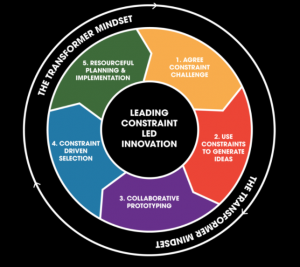
Compare the examples of networked communities you focused on. What are several cognitive and social affordances of membership in these networked communities? How might understanding of a math or science misconception be addressed in these technology-enhanced environments? Name the misconception and describe it in your post, drawing upon the reading(s) you did for the social construction of knowledge.
I can honestly say, I was excited to delve into the networked communities of the Exploratorium and various virtual field trips and web-based expeditions.
- The Exploratorium believes that “The Science of Sharing” experiences aren’t just about play but importantly thinking about critical challenges that can lead to knowledge and reflection of the worlds pressing problems.
- Various Virtual Field Trips and Web-Based Expeditions
Both of these networked communities have students engaged in practical and discovery activities which can lead to deeper understanding. Gutwill, J. P., & Allen, S. (2011) stated that experimental inquiry games, similar to tasks in Exploratorium, culminate two inquiry skills:
1)Proposing actions: making a plan or asking a question at the start of an investigation
2)Interpreting results: making observations, drawing conclusions, or giving explanations during or after an investigation. Furthermore, Gutwill, J. P., & Allen, S. (2011) recognized several key principles when students are embodied in the design of authentic learning experiences in math or science:
- Builds on on learners prior knowledge
- Teaches through modeling, scaffolding and fading
- Identifies skills explicit
- Supports metacognition
- Supports collaboration
- Strikes a balance between choice and guidance
- Places realistic demands on teachers
I found that principle of finding “ a balance between choice and guidance” is the true essence of STEM. Earlier in this course, Confrey stated, “children develop ideas about their world, develop meanings for words used in science, and develop strategies to obtain explanations for how and why things behave as they do” (Confrey, 1990, p. 3). If this is true, teachers need to promote “change in pupils’ ideas is to show pupils the limitations of their discrepant event” (p.89). During a PL session for STEAM, we were given makerspace materials to create projects, and we were given time to consolidate with our group to make the project. Right before we started we told that we would “take” item from someone group to enhance or better or project. Unbeknownst to us, a major component for our project was taken! Morgan, A., & Barden, M. (. e. (2015) Constraint-Led method and mindset that embraces constraint when developing new ideas.

This approach to address scientific content in an area where misconceptions are held, then through leading through constraints led innovation many students can reconstruct their thinking. Students can deconstruct their knowledge and reconstruct it using critical thinking and logical reasoning. Finally, Gutwill, J. P., & Allen, S. (2011) concluded that learners who were engaged in activity structure within a networked community tended to make correct interpretation after instruction. (p. 149)
Driver, R., Asoko, H., Leach, J., Scott, P., & Mortimer, E. (1994). Constructing scientific knowledge in the classroom. Educational researcher, 23(7), 5-12
Gutwill, J. P., & Allen, S. (2011). Deepening students’ scientific inquiry skills during a science museum field trip. Journal of the Learning Sciences, 21(1), 130-181
Morgan, A., & Barden, M. (. e. (2015). A beautiful constraint: How to transform your limitations into advantages, and why it’s everyone’s business. Hoboken, New Jersey: John Wiley & Sons, Inc.
